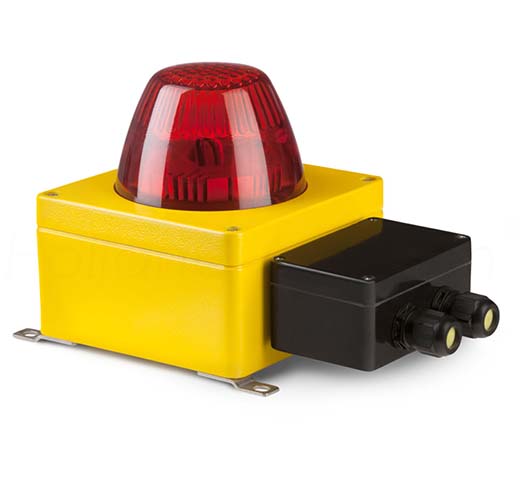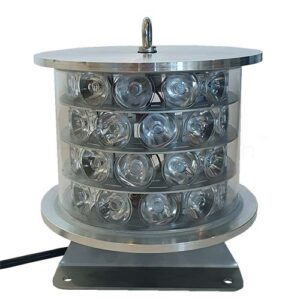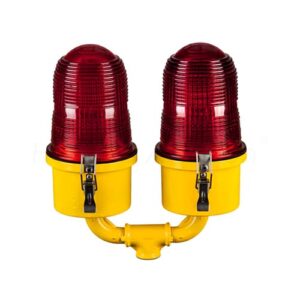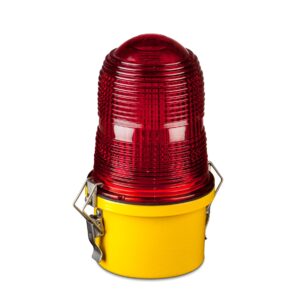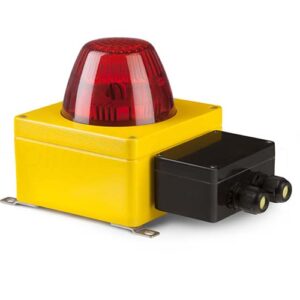Description
HA-OSH150-32 or HA-OSH150-50 is a low-intensity obstruction light to denote obstacles up to 45 meters/150 feet.
An obstruction is an object that extends above an obstacle protection surface and shall be lighted at night. The marking or lighting of obstacles is intended to reduce hazards to aircraft by indicating the presence of the obstacles. Low-intensity obstacle lights, Type A or B, should be used where the object is less extensive and its height above the surrounding ground is less than 45 m.
Features of the HA OSH150-32 LED Obstruction light
- Weight and Size: 4.2 kg, 160 x 244 x 150 mm
- Technology and Compliance: LED technology suitable for Atex IECEx zone 2, both on land and offshore. Holland Aviation HA-OSH150 type with glass Fresnel lens, complying with CAP437 and ICAO Annex 14 class A and B standards (10 Cd and 32 Cd).
- Power and Durability: 5-watt power consumption with an expected lifetime of over 75,000 hours.
When do you need what obstruction light:
Obstruction lights are crucial for aviation safety, as they enhance the visibility of buildings or other fixed obstacles that could pose a risk to aircraft. These lights are typically installed on towers, fences, and other structures near heliports or airports. There are two main types of obstruction lights:
- Red Lamps: These can either blink or remain constantly illuminated.
- White Lamps: These typically flash 40 times per minute.
The use of these lights varies depending on the time of day and the height of the structure. White flashing lights are used during the daytime, while red lights are used at night. For buildings and structures between 61 and 152.4 meters (200-500 feet) tall, medium-intensity white flashing lights are recommended. If a building exceeds 152.4 meters (500 feet), it should be painted for added visibility, and structures taller than 213.4 meters (700 feet) should use high-intensity white flashing lights, both day and night.

